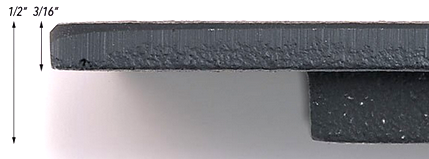Here’s a sobering list regarding politicians who have lost their life in a transit crash.
- 2024: a helicopter crash killed President of Iran Ebrahim Raisi and many government officials.
- 2020: Iranian General Qasem Soleimani, commander of the Quds Force, died in a drone strike on his vehicle
- 2010: Lech Kaczyński, President of Poland, died in a plane crash near Smolensk, Russia, along with his wife and 94 others, including many Polish government officials.
- 2005: John Garang, First Vice President of Sudan and President of Southern Sudan, died in a helicopter crash.
- 2004: Boris Trajkovski, President of Macedonia, died in a plane crash.
- 2002: Paul Wellstone, U.S. Senator from Minnesota, died in a plane crash while campaigning for re-election, along with his wife, daughter, and several staff members.
- 1996: Ron Brown, U.S. Secretary of Commerce, died in a plane crash in Croatia.
- 1994: Juvenal Habyarimana, President of Rwanda, and Cyprien Ntaryamira, President of Burundi, both died in the same plane crash, which helped trigger the Rwandan genocide.
- 1988: Zia-ul-Haq, President of Pakistan, died in a plane crash along with several senior military officials and the U.S. Ambassador.
- 1986: Samora Machel, President of Mozambique, died in a plane crash near the South African border.
- 1981: Jaime Roldós Aguilera, President of Ecuador, died in a plane crash in the Andes mountains.
- 1981: Omar Torrijos, leader of Panama, died in a plane crash.
- 1980: Francisco de Sá Carneiro, Prime Minister of Portugal, died in a plane crash.
- 1976: Abdul Razak Hussein, Prime Minister of Malaysia, died in a helicopter crash.
- 1969: René Barrientos, President of Bolivia, died in a helicopter crash.
- 1961: Dag Hammarskjöld, Secretary-General of the United Nations, died when his plane was shot down in Northern Rhodesia (now Zambia) while on a peace mission to resolve the Congo Crisis.
- 1959: Barthélemy Boganda, first Prime Minister of the Central African Republic, died in a plane crash.
- 1957: Ramon Magsaysay, President of the Philippines, died in a plane crash.
- 1949: Muhammed Ali Jinnah, founder of Pakistan, died in an ambulance that failed en route to a hospital.
- 1943: Władysław Sikorski, Prime Minister of the Polish government-in-exile, died in a plane crash in Gibraltar.
This short list is meant to highlight the vulnerability of even highly protected officials to transportation accidents. What’s particularly notable is that aircraft used by heads of state typically incorporate rigorous security protocols, redundant safety systems, and are subject to extensive pre-flight inspections.
By contrast, modern consumer vehicles exploit technological sophistication to exploit “efficiency” loopholes and safety shortcuts rather than pay for the protection necessary for highly targeted security threats. Furthermore, vehicles that are computerized and connected have introduced a radical new dimension of potential vulnerabilities that are not fully accounted for in high-value asset transportation security.
Consider now the short list of “features” and whether there’s a clear and proven associated threat:
| Vehicle Feature | Safety Threat |
|---|---|
| Remote connectivity | Yes |
| Over-the-air updates | Yes |
| Drive-by-wire systems (software-controlled steering/braking) | Yes |
| Numerous electronic control units | Yes |
| GPS and navigation systems | Yes |
| Wireless key systems | Yes |
| Connected infotainment systems | Yes |
| Smartphone integration | Yes |
I mention this to point out that any national leader stepping into a Tesla anywhere in the world is clearly in immediate danger of serious software and hardware flaws that send their car at high speed into a wall, just as one obvious example that we regularly see with Tesla crashes in the news.
A state leader in a Tesla is a form of negligence rarely seen, an extraordinary breach of public trust to put themselves in harm’s way.
Though Trump frequently attacked electric vehicles during last year’s campaign, he … sat in the driver’s seat of a sedan, with Musk seated beside him, and said he planned to buy one. […] He did not take a test drive but said he might “another time.” […] It is not clear when, if ever, Trump would have the chance to drive a car of any kind unless he does so within the White House complex or a similarly secure area.
Security agencies responsible for protecting heads of state are well aware of the threats and skilled in countermeasures for vehicles designated in leadership transportation. They never should or would allow a national leader to promote any unmodified commercial vehicle for their personal transit, regardless of the manufacturer, and yet….

A President was standing next to the Tesla CEO to pump the stock price, saying he would gladly get into an unsecured remote-controlled car. This suggests the Tesla CEO may have undue influence over that country’s leadership.
Consider again the list above. And perhaps most important of all, consider the sophistication of crashed machines that can affect the success of investigations.
Three casino executives who worked for billionaire real estate developer Donald J. Trump were among five people killed Tuesday afternoon in a helicopter crash in New Jersey about 40 miles north of Atlantic City.





